Getting the Horse Back in Front of the Cart
Adding return back to your investment strategy
Joe Morgan, Chief Investment Officer
SVB Asset Management
“I don’t care about yield!”
Since when has “return” been a dirty word? Investors are in great pain these days, particularly in the money market arena. This once-dismissed and neglected market segment is now hitting the press more frequently than lipstick-wearing pigs. Decision-makers are running scared, stressing that they “don’t care about yield,” and simply want the safest investments available. Is this the correct approach? We don’t believe so.
From 2003 through 2006, the content of our client meetings was quite predictable. We would present our economic view and outlook for the future, discuss the current and potential future investment strategies and finally present performance versus appropriate market benchmarks. Clients would smile and nod politely, but come alive only during the performance discussion. Almost 100 percent of the time, their interest was geared toward increasing performance on the account, with little interest in the intricacies of financial instruments to be used.
Time and again, we had to talk our clients off the ledge with regard to investment strategies such as Auction Rate Securities (ARS), which were performing nicely in those days. Most of our clients would leave those discussions, I imagine, with a better level of comfort as to why we were avoiding the sector but disappointed they couldn’t get the extra 15 to 25 basis points of return they thought was available at no additional risk.
In fact, we lost many prospects in those days because we refused to play in that market. “Why won’t you take this ‘free money’ with an AAA-rating?” we were often asked. Simply put: because we didn’t feel the reward –– a modestly higher yield –– was enough to compensate for the risk – reduced liquidity.
Today, of course, many CFOs have egg on their face and many brokers are facing multi-million dollar lawsuits as a result of their ARS investment strategies. Even those investors who avoided the ARS mess are running toward the sidelines virtually eliminating “return” as a strategic objective.
Instead of riding a pendulum that has moved from a blind pursuit of yield to avoidance of risk at all costs, we feel that investors must return their focus to their long-term objectives: capital preservation, liquidity provision, return. We like to convince our clients that all three of these can be achieved; that they are not mutually exclusive objectives.
Rather than eliminating return to achieve capital preservation, the prudent approach is to consider probable return prospects in conjunction with their expected risks. There is no investment with zero risk, but getting paid appropriately for taking an acceptable level of risk, is the goal. The primary limitation here, of course, is that the new “acceptable level of risk” is extremely low.
“Where do we start?”
First of all, let’s get the ground rules straight. A simple review of your investment policy should confirm the objectives of your investment strategy are to primarily preserve capital and liquidity. Achieving return should be a third objective but should come into play only after consideration of the first two. After all, your primary business is your business, not your portfolio.
Now that investors’ focus has shifted almost entirely from return to the absence of return, I encourage our clients to go back to their investment policy and reinforce the top three priorities. There is a reason why return remains in investment policies, and there is also a reason it is the third priority; however, the importance of it must not be forgotten.
Today, many investors are shifting entirely to money market mutual funds governed by SEC Rule 2a-7 or U.S. Treasuries. I believe this is a knee-jerk reaction that, in the long run, is inappropriate. Certainly, consideration needs to be paid to internal communication and education regarding risk and reward in the markets, but a long-term strategy of accepting 1 percent-handle returns is not a winner.
The second and probably most significant step is for investors to consider whether they are partnering with the appropriate investment professional(s): An SEC Registered Investment Advisor (RIA) or a transactional focused broker-dealer relationship.
Because an RIA is required to provide fiduciary duty –– meaning a client’s interests must be elevated above the RIA’s interests –– they can sit on the same side of the table as an investor, share the same view of their investment objectives and minimize potential conflicts of interest. A broker/dealer relationship can be just the opposite since it is more of a sales-oriented environment.
I have yet to hear of any RIAs whose clients own failed auction rate securities. Only brokers seem to have gotten their clients mixed up in these securities at the wrong time. Most of the brokers in question are affiliated with RIAs. Why weren’t they buying ARS as their sister company was pushing them on unsuspecting clients? A different business model. A different motivation. Make sure your advisor’s motivation is in line with yours.
”But there are no return opportunities today!”
Incorrect. There are plenty of opportunities to add return without taking on appreciable risk today. Look to your RIA to ferret these opportunities out for you, monitor them and adjust your portfolio as needed.
There are a few obvious sources of return that should not be overlooked. Yield advantage can still be found in high quality, individual issuers that have avoided or potentially even benefited from today’s credit crises. The most obvious is commercial paper and corporate bonds issued by discount retailers. Discounters such as Target and Wal-Mart tend to do better during downturns in the economy for obvious reasons. There are many other issuers that offer significant yield advantage that have avoided today’s downturn. While our approved credit list has fallen from well north of 100 issuers to well south of that mark, there are plenty of companies that will survive and even thrive in today’s market.
Market volatility can present many opportunities as well. In June, the markets believed the Fed would raise interest rates at least three times before 2008 ended. Along with many other RIAs, we thought this was a ludicrous idea and took advantage, buying many A or better rated issuers in the one- to two- year part of the curve at yields surrounding 4 percent. Since then, the market has returned to its senses and these same securities are now trading in the low- to sub-3 percent range. Having a solid Investment Policy in place along with a good relationship with your RIA will help you take advantage of these market opportunities as they arise.
If our economic view of a malaise lasting months or perhaps more than a year is correct, it will be important to monetize opportunities afforded by market volatility as they arise in order to maximize return underneath the constraints of preserving both principal and liquidity.
”Where do we go from here?”
Successful investors aren’t hanging on the pendulum ball. There is a trade-off between return and risk in both good markets and bad. The most successful CFOs understand this relationship and manage “toward the middle” in all markets. Of course, it makes sense to adjust risk levels in portfolios, but those tactical decisions need to be made inside of a strategic framework laid out by your Investment Policy and managed professionally by your Registered Investment Advisor.

























